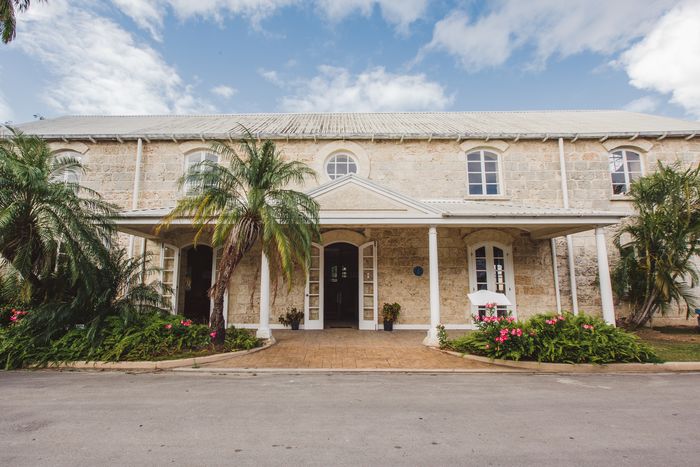
L’activité récente de la distillerie Foursquare et de son directeur Richard Seale sur les réseaux sociaux nous a donné envie d’interroger le principal intéressé sur ce qui l’anime en ce moment. Un nouveau pot-still, la distillation sous-vide, le high ester, le pur jus de canne, les nouveautés à paraître, et toutes les questions que nous avons toujours voulu lui poser… Richard a bien voulu se prêter au jeu de cette longue interview, avec le goût de la didactique qui le caractérise. Un grand merci à lui !
J’ai vu que vous aviez mis un tout nouveau pot-still en service, et expérimenté la distillation sous vide. Est-ce que cet alambic est spécialement conçu pour la distillation sous-vide, ou bien est-ce qu’il fonctionne aussi comme un alambic traditionnel, pour la distillation atmosphérique ?
Oui, il fonctionne également en distillation atmosphérique. C’est l’avantage avec la distillation discontinue ; c’est toujours plus flexible que la distillation continue. Notre colonne de distillation fonctionne quant-à elle uniquement sous-vide, elle a été conçue pour fonctionner d’une façon bien spécifique. Nous ne souhaiterions pas la faire fonctionner de manière atmosphérique, cela n’aurait aucun sens.
Il y a plusieurs colonnes sous-vide qui existent dans le monde, mais la notre est probablement la seule qui fonctionne selon le simple principe d’analyse / rectification créé par Coffey. De la même manière, notre pot-still est le seul alambic à double retors adapté à la distillation sous-vide. Les autres pot-stills sous vide existants sont de fabrication récente – souvent en inox – non pas des alambics de conception traditionnelle, en cuivre, adaptés au sous-vide comme le notre.
Quels sont les avantages de la distillation sous-vide ?
En distillation discontinue, on garde un grand contrôle sur la sélection du distillat, du cœur de chauffe, et de choses comme la vitesse de distillation. On peut considérer que le sous-vide ajoute l’option du choix de ta température de distillation. Le vin de canne à l’intérieur de notre alambic sous-vide sera en ébullition à 80°C par exemple. Que ce soit en colonne ou en alambic traditionnel, une température plus basse offre l’avantage d’éviter les arômes d’une chauffe trop forte pour un bon nombre de composés du vin de canne. C’est aussi beaucoup plus efficace en termes de dépenses d’énergie.
Est-ce que ce nouveau pot-still fait aussi suite à un besoin de produire beaucoup plus ?
Oui, aujourd’hui nous avons besoin de produire plus de rhum afin de répondre à la demande à laquelle on s’attend dans le futur. Et une grande partie de cette demande se dirige désormais vers le haut de gamme, où la partie pot-still est primordiale.
Comment est-ce que l’on met en service un pot-still pour la première fois ? Combien de temps faut-il pour se familiariser avec lui ?
Il y a eu trois phases pour le démarrage :
Premièrement, calibrer et tester tous les instruments. Cette partie est vraiment cruciale pour un alambic sous-vide, car justement la partie sous-vide nécessite des instruments et un contrôle informatisés.
La seconde étape consiste à distiller de l’eau. Cela permet de vérifier et de corriger d’éventuelles fuites, et plus généralement de tester la configuration.
Ensuite, nous faisons des essais sous-vide, et finalement nous distillons une cuvée de vin de canne sous-vide. Cela est plus long que ça en a l’air, parce que nous n’arrêtons pas d’apporter des changements et de corriger des choses. Ce soir par exemple, nous avons changé le câblage de la pompe à vide, car nous avions des difficultés à ajuster la vitesse du moteur, et nous avons trouvé un défaut dans les connexions électriques.
Quelles nouvelles fonctionnalités offre cet alambic ?
Il offre principalement trois nouvelles fonctionnalités :
– La distillation sous-vide
– Le Nano-cuivre
– Un double système de chauffe
Nous avions déjà du nano-cuivre sur le pot still existant, mais il s’agissait d’une modification de l’alambic original. Pour le nouvel alambic, nous avons incorporé les surfaces de nano-cuivre dès le départ de la construction.
Le nano-cuivre permet de concevoir un alambic avec l’ exacte forme thermodynamique que l’on désire, et offre également un plus grand effet catalyseur pour la même surface. Plus simplement, nos 6 plateaux fonctionnent normalement comme 6 plateaux d’un point de vue distillation, mais leur effet catalyseur agit comme si nous avions 36 plateaux. Bien sûr, si l’on installait 36 plateaux dans l’alambic, cela changerait son utilisation du tout au tout, et d’une manière que nous ne souhaitons surtout pas.
Le double système de chauffe est composé de serpentins à vapeur et d’un bain-marie (« steam-jacket »). Cela permet un contrôle des plus précis sur la distillation.
Avez-vous un système de « marks » ? Par exemple, des proportions de standard d’assemblage pot / colonne, différentes concentrations de distillats…
Étant une distillerie relativement récente, vous n’avez peut-être pas cet historique de marques destinées aux courtiers, mais plutôt pour votre propre fonctionnement ?
L’histoire des marques est plutôt intéressante, à l’origine chaque distillerie avait sa propre marque unique. Mais au fur et à mesure de leurs fermetures, leurs recettes ont été transférées à d’autres distilleries, afin que cette « mark » puisse toujours être en mesure d’être fournie. Comme vous le savez, dans la région du Demerara, l’ensemble des alambics et des recettes ont été transférés afin que les marques puissent toujours être produites même si la distillerie d’origine avait fermé. Mais cela a effectivement changé la culture du rhum, si bien qu’aujourd’hui il est normal même pour une nouvelle distillerie de produire une variété de rhums différents.
On peut considérer que les rhums de pot-still et de colonne sont nos deux marques originelles. Aujourd’hui, puisque l’on utilise de la mélasse, du jus de canne, différentes techniques de fermentation, et bien entendu différents fûts, nous produisons une gamme de « marks » qui entrent dans les assemblages.
Le rhum a connu un certain succès ces dernières années, est-ce que votre stock de rhums vieux parvient à satisfaire la demande ?
Aujourd’hui nous produisons plus de rhum qu’il y a 5 ans. Et 5 ans auparavant, nous faisions plus de rhum qu’il y a 10 ans de cela. À mesure que la demande augmente, nous investissons davantage. Comme je l’explique toujours, nous ne nous sommes pas assis un beau jour pour décider de sortir Redoutable. Il y a d’abord eu le succès du Doorly’s XO, donc nous avons investi pour produire le Doorly’s 12. Puis nous avons investi à nouveau pour faire le Doorly’s 14. Le nouveau pot-still est justement là pour satisfaire la demande future.
Vous remarquerez aussi que nous sommes très précautionneux avec nos Exceptional Casks Series et nos sorties Velier. Nous pourrions en vendre plus, mais il est important de toujours conserver du stock.
De combien de fûts disposez-vous dans vos chais à l’heure actuelle ? Et quels sont les plus âgés ?
Nous en avons environ 45 000 – un chiffre en constante augmentation. Le plus vieux rhum encore en fût est de 2004.
Il semble que vous vous amusiez beaucoup à sélectionner de nouveaux fûts, avez-vous une essence de bois ou une provenance que vous préférez en secret ?
Pas vraiment ; nous recherchons avant tout la qualité des fûts. C’est pour cela que nous choisissons des ex-cognac par exemple, car comme vous le savez, les gens du cognac sélectionnent des fûts d’excellente qualité. C’est pour la même raison que j’ai choisi quelques fûts ex-sauternes, qui sont parmi les meilleurs fûts qui existent. Pour la même raison, je ne choisirais pas de fût de Scotch Whisky ou de tequila. Cela parce que ces fûts ne seraient pas meilleurs que ceux que j’ai déjà.
J’ai commencé avec des fûts ex-sherry, et il a été très naturel de passer aux fûts ex-madère, car ils ont une connexion plus forte avec la Barbade. Je me fournis également en fûts de chêne français ex-syrah. Ce n’est pas parce que j’aime particulièrement le syrah, mais parce que les fûts proviennent de l’un des meilleurs vignerons du monde, qui peut se permettre d’avoir des fûts de la meilleure qualité qui soit.
C’est également pour cela que les fûts « gadgets » ou « excentriques », en dehors des dénominations classiques, ne m’intéressent pas.
Utilisez-vous parfois du fût de chêne américain neuf, ou vous tournez-vous toujours vers les fûts ex-bourbon ?
Quelques années en arrière, nous avons acheté quelques fûts neufs, mais ce n’est pas quelque chose que nous reproduirons. Nous préférons les anciens fûts de bourbon, que nous re-brûlons également. Pour moi, le résultat est supérieur au fût neuf.
Certaines distilleries ont tendance à « assaisonner » leurs fûts neufs avec leur propre rhum (je pense aux fûts « ex-Neisson » ou « ex-Providence »), est-ce quelque chose qui vous intéresse ?
Oui, c’est ce que nous avons fait avec nos fûts neufs. Nous le faisons aussi avec d’autres fûts, mais ce sont des secrets que je ne souhaite pas partager.
Pourquoi vous-êtes vous intéressé au pur jus de canne ? Est-ce une question de survie dans le futur, avec les pénuries annoncées de mélasse ?
Aujourd’hui, nous concevons le rhum comme étant issu soit de pur jus, soit de mélasse. Cela n’a pas toujours été le cas dans l’histoire, car le rhum était fait sur les domaines sucriers qui utilisaient les deux matières premières. Ce qui m’a inspiré en réalité, c’est l’envie de re-brouiller cette ligne. Je ne souhaite pas que les gens pensent Foursquare comme une distillerie de mélasse ou une distillerie de pur jus de canne, mais comme une distillerie qui utilise de la canne à sucre.
J’ai été très inspiré par ma visite à la distillerie Hampden, où le rhum est fait de manière inchangée depuis 250 ans, et où l’on utilise aussi bien du jus que de la mélasse. Il ne s’agit pas de copier leurs méthodes, mais de partager cette philosophie. Foursquare est aussi un lieu historique du sucre, qui pas le passé faisait du rhum en employant du jus de canne et de la mélasse. Cela semblait donc tout à fait naturel de presser à nouveau de la canne chez Foursquare.
Bien sûr, nous avons également dans l’idée d’élargir notre potentiel, et de protéger notre approvisionnement avec le jus de canne. Nous avons aujourd’hui un peu plus de 8 hectares qui nous sont propres pour planter de la canne, en plus des cannes de la Plantation Ashbury.
Qu’avez-vous fait des distillats de vos premières presses de 2018 ? Sont-ils en vieillissement ?
Nous travaillons le jus de canne depuis 2016. Les deux premières années, nous nous sommes fournis chez St Nicholas Abbey. En 2018 et 2019, nous avons utilisé notre propre jus ainsi que celui de St Nicholas. Pour 2020 et 2021, la canne venait de la Plantation Ashbury. Tout est en vieillissement.
Utilisez-vous du pur jus frais ou du sirop ?
Nous utilisons du jus frais. Nous avons utilisé du sirop de St Nicholas par le passé, mais nous préférons le jus frais car il vient mieux en complément de ce que nous faisons en mélasse.
Diriez-vous que votre rhum de pur jus sera un rhum « Single Estate » à l’avenir ?
Nous ne dirions pas cela, car toute la canne ne vient pas de Foursquare, donc ce serait trompeur. Quand nous aurons notre propre canne, il est possible que nous sortions un rhum single estate, mais ce n’est pas vraiment l’objectif. Je préfère assembler.
Votre rhum high ester à sortir avec Habitation Velier est un assemblage de mélasse et de pur jus. Comment cette idée est-elle née ?
Vers la fin de la récolte, il est tout à fait possible de faire des rhums avec des esters très élevés, provenant de vins de canne avec une très forte acidité. Donc je me suis dit pourquoi pas !
Est-ce qu’il est totalement non vieilli ?
Tout à fait.
Comment avez-vous conduit la fermentation du jus de canne, ce qui j’imagine est très différent de ce à quoi vous êtes habitué ?
Après avoir fait de la fermentation de mélasse durant 20 ans, je pensais être devenu expert. C’est en faisant de la fermentation naturelle avec du jus de canne que je me suis rendu compte qu’en fait je ne savais rien.
On croit souvent qu’il faut utiliser au moins des vinasses (dunder) pour obtenir des rhums high ester, pourtant certains comme Worthy Park n’ont pas recours à ces méthodes. Vous-êtes vous inspirés d’eux ?
Oui, il s’agit en effet d’un malentendu. Les vinasses font partie de la fabrication du rhum au sens général. Historiquement, tous les rhums étaient produits en utilisant des vinasses. Même aujourd’hui, Hampden fait des rhums « common clean » (la catégorie des rhums légers, ndlr) en utilisant des vinasses, qui jouent un rôle important dans la fermentation naturelle de la mélasse. Pourtant, il ne s’agit pas d’un élément constituant du high ester. Nous avons réellement développé notre propre méthode, qui est différente que ce soit de Worthy Park ou de Hampden.
Donc il s’agit « simplement » d’une bonne levure, d’un bon contrôle de la durée et de la température, pour une fermentation secondaire malolactique ou bactérienne ?
Secret. Indice : S.Pombe is important.
(Schizosaccharomyces pombe est une levure particulière, une levure à fission qui joue un rôle important dans les rhums grand arômes, ndlr)
Utiliserez-vous du vinaigre de jus de canne pour acidifier votre fermentation ?
Non, nous ne produisons pas de vinaigre de canne à proprement parler, mais nos vins de canne sont pourvu d’une forte acidité.
Les rhums high ester de la Barbade sont donc quelque chose qui appartient au présent, et nous l’espérons, au futur ; mais est-ce qu’ils étaient également présents par le passé ?
Oui en effet. Ils étaient appelés « rhum de type longue fermentation ». Il ne s’agissait probablement pas de high esters dépassant les 600 g/hlap, mais certainement au-delà des 300.
Devons-nous nous attendre à une évolution du style Foursquare, si ces rhums entrent dans les assemblages à venir ?
C’est tout le défi pour nous. Nous sommes heureux de repousser les limites, mais il est important que nos rhums soient reconnus comme « rhums de la Barbade », comme rhums Foursquare. N’importe qui peut faire quelque chose de différent, c’est finalement assez banal de faire cela. Le vrai défi est d’évoluer tout en conservant le cœur de notre philosophie et de notre style.
Notre high ester est très différent d’un rhum de la collection ECS par exemple, mais il est très doux, très équilibré. Nous aimons faire des rhums bien équilibré, très doux. J’aime à penser que vous serez d’accord avec le fait qu’il s’agit du genre de rhum high ester que vous attendez de Foursquare. Là est l’important.
Avez-vous mis une partie de ces rhums en fûts ?
Cet assemblage est unique, pour la sortie spéciale Habitation Velier, mais oui, nous avons utilisé du high ester pour des assemblages qui sont aujourd’hui en fûts.
Comment se passent les discussions autour de l’Indication Géographique du Rhum de la Barbade ?
Ferrand a tout arrêté.
Pouvez-vous nous parler des nouvelles sorties pour l’Europe, et en particulier pour la France ?
Indelible a été envoyé l’année dernière, donc il devrait déjà être là. La prochaine sortie est Sovereignty. C’est un brut de fût, 14 ans, un assemblage de rhums issus de fûts ex-bourbon et ex-sherry. Il partira bientôt, donc je pense qu’il sera disponible aux alentours du mois de mars.
Vous avez commenté les travaux de Stephen Shellenberger (Boston Apothecary), en reconnaissant tout en nuançant le rôle des S.Pombe, mais que pensez-vous des « rum oils » ? Est-ce quelque chose qui entre dans votre conception du rhum ?
On n’est pas exactement sûr de ce à quoi Arroyo faisait référence. On pense qu’il s’agit de terpènes (des molécules à l’origines d’huiles aromatique, ndlr), mais c’est probablement plus complexe que cela. Les spiritueux ont tous en commun des esters, des alcools supérieurs et des huiles de fusels, et pourtant ils ont tous des arômes différents. On sait reconnaître un distillat de canne à sucre d’un distillat de céréales. C’est cet élément déterminant qui peut être résumé à l’huile de rhum.
Cela n’est pas aussi simple que de la résumer à un composé ni même à une famille de composés ; c’est une combinaison qui produit cette identité caractéristique qui définit un rhum. La sciences des arômes est très complexe, les composés peuvent avoir des arômes très différents selon qu’ils sont mélangés avec un autre ou pris à part. Il ne sera peut-être jamais possible de définir ce qu’est l’huile de rhum, mais seulement de savoir quand elle est présente.
La première Barbados Rum Experience (une semaine de visites et de séminaires autour des distilleries de La Barbade, ndlr) a été un succès auquel l’ensemble des amateurs aurait rêvé de participer. Que pouvons-nous attendre de la prochaine édition ?
Cet événement a en effet été un grand succès. Espérons que le covid ne soit plus là et ne restreigne pas les effectifs l’année prochaine. Nous avons eu de superbes témoignages, et les participants ont eu l’occasion de profiter de bien plus qu’une visite classique des distilleries. Ils ont appris non seulement au sujet de la Barbade, mais aussi de l’histoire et de la culture du rhum de La Barbade.
Avez-vous remarqué un développement du spiritourisme à la Barbade ? Est-ce quelque chose que vous aimeriez développer également, en améliorant la visite de la distillerie Foursquare, etc ?
Oui, c’est quelque chose que nous voyons de plus en plus. J’ai reçu beaucoup de visiteurs qui me disaient avoir choisi la Barbade pour leurs vacances parce qu’ils souhaitaient visiter Foursquare. Nous prenons cela en compte, mais la visite de Foursquare est déjà très complète. On peut visiter la distillerie de près, avec un accès à toutes ses parties. Ce n’est pas une visite artificielle. Donc le défi pour nous est d’améliorer cette expérience, mais surtout de conserver son authenticité.
Avez-vous prévu de développer vos marques « classiques », avec par exemple des bruts de fûts, ou bien est-ce que ce genre de choses est réservé aux Exceptional Cask Series ? J’imaginerais bien un Doorly’s XO ou un RL Seale’s 10 ans en brut de fût dans ma cave !
C’est peu probable.
Dommage, j’aurai essayé !:D
Merci Richard d’avoir pris le temps de répondre à nos nombreuses questions, et de ne jamais hésiter à ouvrir les portes de votre distillerie, que ce soit pour nous, visiteurs virtuels, ou pour les chanceux qui ont pu la découvrir en vrai. À très bientôt pour les nouveaux ECS !
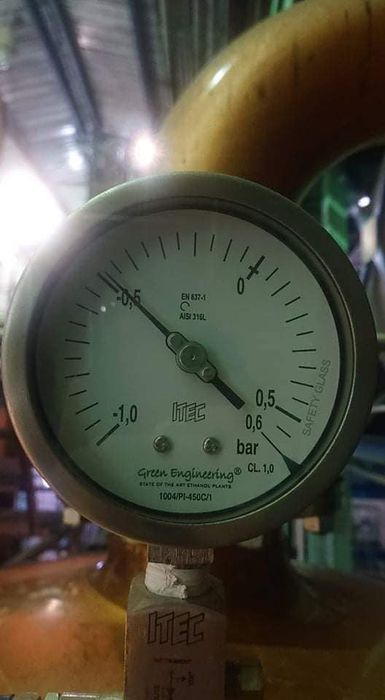
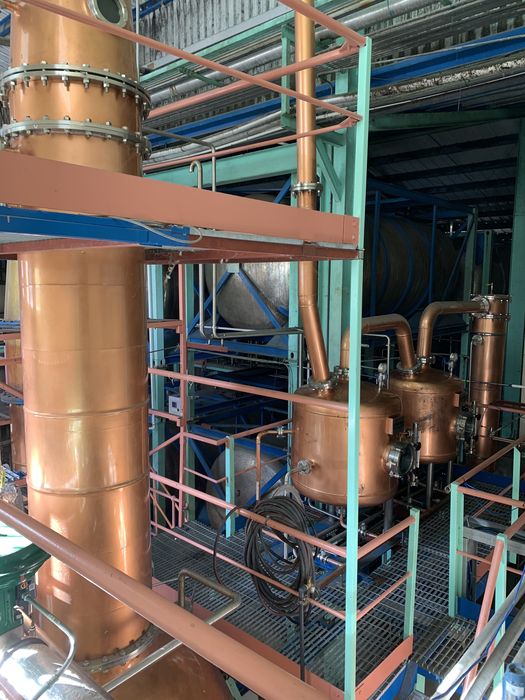
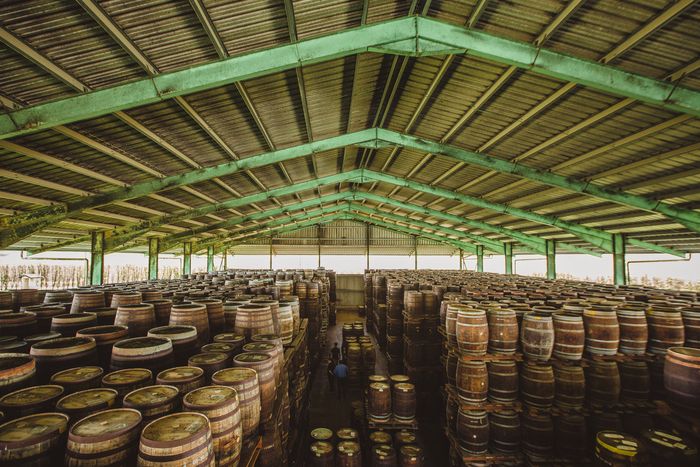
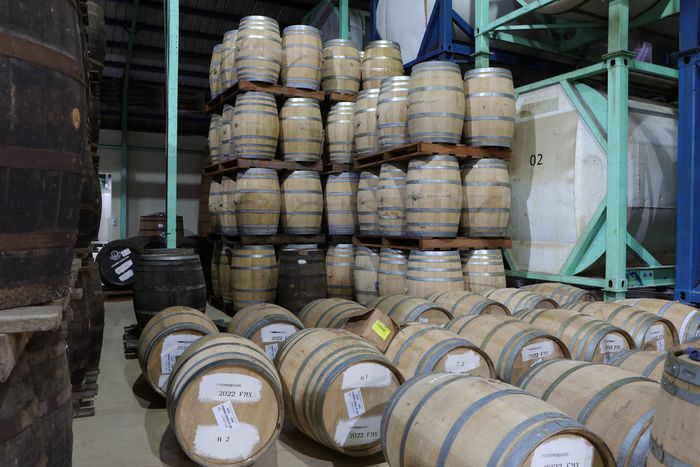

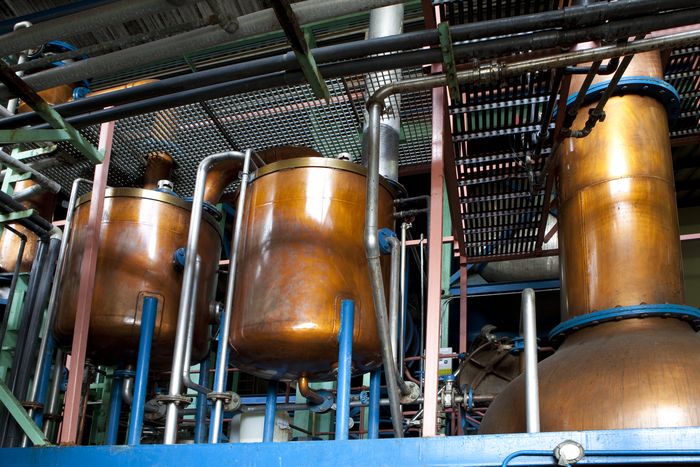
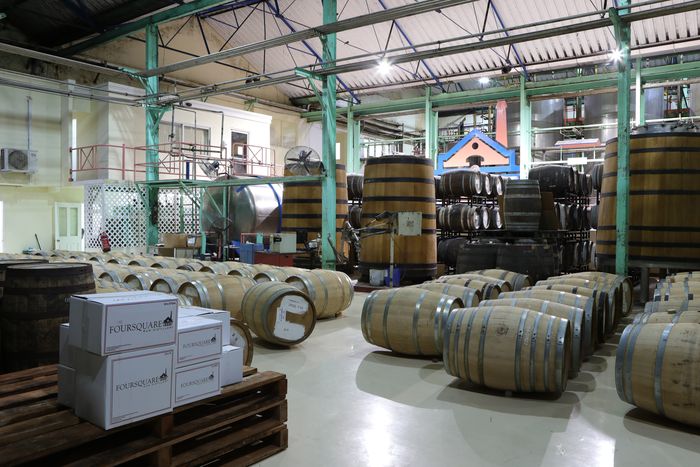
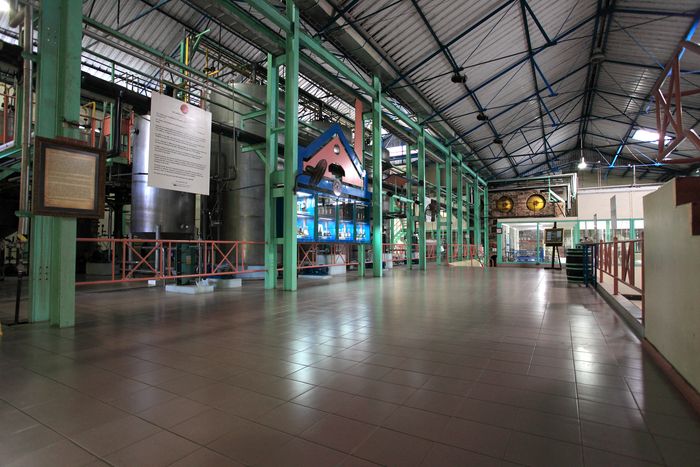
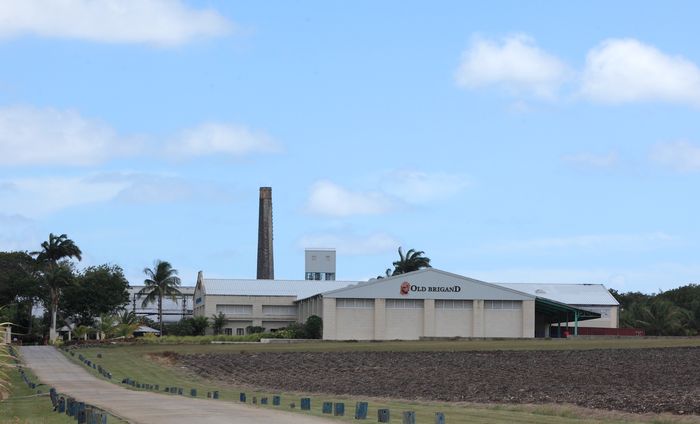

Très intéressant !
Merci Jerry, heureux de constater que ces lectures intéressent les plus érudits d’entre nous 😉
Wonderful interview thank you:)
My pleasure Chris, thank you for this kind comment
Très intructif
Bravo et Merci